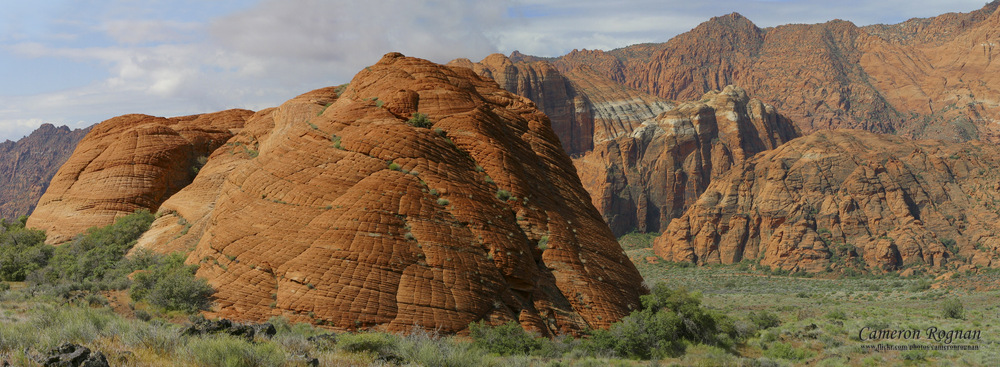Geology
Geology in the Reserve
Perhaps the single most important factor in the creation of the landscapes and habitats of Washington County (and the reserve) is the Hurricane Fault. The fault bisects the county, and is visible as the Hurricane Cliffs which run south to the Grand Canyon. The dynamic cracking, dropping, and thrusting of the earth’s crust exposed colorful layers of rocks dating back to the age of the dinosaurs and older. Faulting helped create the many cinder cones and lava flows in the area. Erosion has since carved dramatic canyons, and more recently, windblown sand has accumulated in eddies, forming soft dunes. This structural diversity is enriched by the Virgin River and its tributaries, ribbons of water allowing for a lush biodiversity in the desert.
Southern Utah resides within an ecotone: a habitat created where two or more distinctly different ecosystems meet. These ecosystems include:
The Great Basin
The Great Basin’s vegetation is low and all looks the same, often with a single dominant species of shrub for miles. Basin and range topography wrinkles the landscape. Streams never make it to the ocean but gather in land-locked lakes. It is a “cold desert” due to its northern latitude and higher elevations. Though the Mojave share similar geologic structure, the Great Basin is easily distinguished ecologically by a lack of creosote bush and surprisingly few species of cacti.
The Colorado Plateau
Spectacular red rock formations are the trademark of the Colorado Plateau, and sedimentary layers display a rainbow of hues. Reaching to 12,700 feet, high forested mesas and mountains are cut by deep canyons and cottonwood-lined streams. Lower elevations are dominated by desert scrub. The uniqueness of this canyon county results in species endemism – more than three hundred plant species in the Colorado Plateau are found nowhere else in the world.
The Mojave Desert
Creosote bush defines the boundaries of, and Joshua trees add character to, the Mojave Desert. Though it is the smallest of the North American deserts, it is the one desert that early travelers dreaded to cross. Rugged and dry, the Mojave is probably best known for Death Valley. This warm desert supports distinctly different plants and animals than its higher-elevation neighbors.

